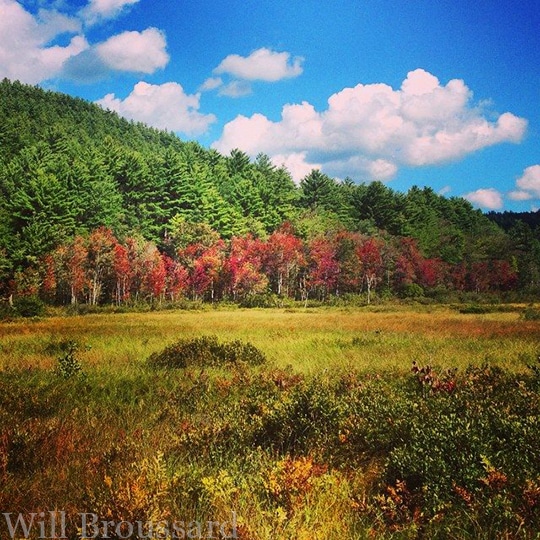Early Hints of Fall Color Emerging In New England
There was a near endless stream of campers heading south on Rt. 93 through New Hampshire on Monday afternoon, leaving their summer grounds in the North Country, White Mountains, and Lakes Region. Labor Day marks the season’s symbolic end, and with students now waiting for the bus on weekdays and football returning on weekends, it’s […]

Coffee By Design | Portland, Maine
Photo Credit : Katherine KeenanThere was a near endless stream of campers heading south on Rt. 93 through New Hampshire on Monday afternoon, leaving their summer grounds in the North Country, White Mountains, and Lakes Region. Labor Day marks the season’s symbolic end, and with students now waiting for the bus on weekdays and football returning on weekends, it’s clear that autumn, with its beautiful foliage colors, is on the way. And yet, as the calendar flipped to September this past weekend, we suddenly found ourselves gripped by the warmest stretch of weather of the entire summer. Go figure!
The weather in September is one of the biggest factors in the quality of New England’s fall foliage. The set up to the autumn season looks great this year, and already early hints and tints of fall color are showing up all around the region. But unless we continue to get the requisite warm sunny days, cool nights, and infrequent but timely rainfall in the weeks leading up to peak, all the promise laid over the past months will be wasted.

Photo Credit : PSU Webcam
The reason for this is rather straightforward for such a complex system. The sugar producing green chlorophyll in the forest canopy is dominant in the summer and early fall, masking the orange and yellow pigments also present in the leaves. In autumn, though, the chlorophyll begins to break down in response to changes in temperature and light, allowing the longer lived oranges and yellows to shine through.
Reds pigments, or anthocyanins, however are very different. These do not exist in the leaves during the rest of the year, and are produced to protect the leaves from direct sunlight in autumn as the trees carry out their other winter preparations. Simply, the more ideal the weather is in September, the brighter the foliage will be.
Very strong reds are already showing up all around New England in specialized environments where swamp maples dominate, and these colors should become even more pronounced this week in the warm sunshine. Look for these trees in low lying wetlands along roadsides, and especially around the inlets and outlets of lakes and ponds. Their strong color will stand out brightly amongst the otherwise green uplands.

Photo Credit : Will Broussard
Elsewhere throughout the region, we are seeing random, individual trees beginning to turn. Often times these trees are stressed in one way or another, but the quality of the color even in these is encouraging. Widespread color is still a few weeks away, but on the north facing slopes of our northernmost mountains, many have noted a change in hue from the deep summer green, with some speckling of yellow from the birches. But mainly, it’s still just green.

Photo Credit : Ernie Mills
With the ball already rolling, what does this incredibly warm weather after Labor day mean for our foliage forecast? Perhaps little, as the heat wave is scheduled to break by Saturday. Prolonged heat, though, could have the effect of stalling the progression towards fall by limiting the breakdown of chlorophyll, so we’ll need to watch the long range outlook, which has recently been revised by the CDC.
Overall, we’re still very optimistic on the season. Given the signs that we’re already seeing, the northern mountains and isolated high valleys could see peak foliage in as little as three weeks or less, with larger areas around the Northeast Kingdom, Northern White Mountains, and the mountains of Western Maine showing widespread color in the last week of September.
Thereafter, the color will fill southward and towards the coast through the month of October, and we still anticipate it to emerge a bit ahead of normal peak times, as long as the long range forecast conditions hold.
Photo Credit : Jim Salge
We have recently posted archived timelines of these maps, showing the emergence of peak in years past. This will serve as a great compliment to our traditional foliage forecast map, which shows a general idea of average peak times.
While these maps do a good job of highlighting general conditions, due to New England’s variety of climates and terrains, there will often be great variation in color over relatively small area. As we reported last week, it’s one of the things that makes a foliage drive such an adventure, because you truly don’t know what awaits around the next hill or in the next valley. Next week we’ll be highlighting many of the great foliage routes around the region. Shortly thereafter, the region will be ready for you to take them! We can’t wait!






